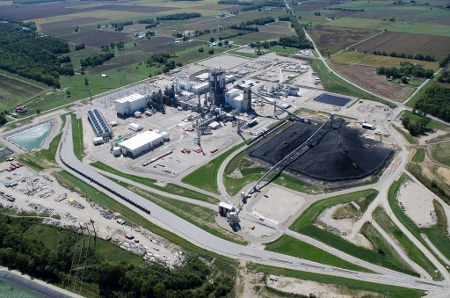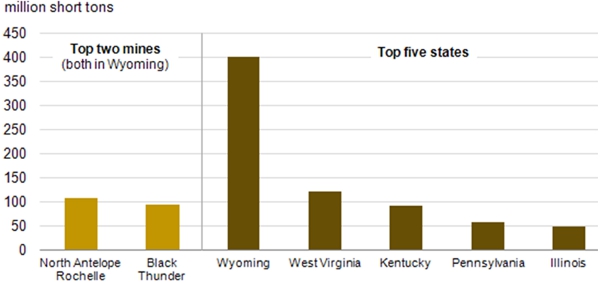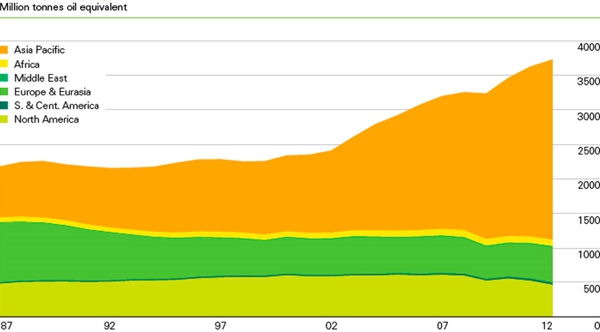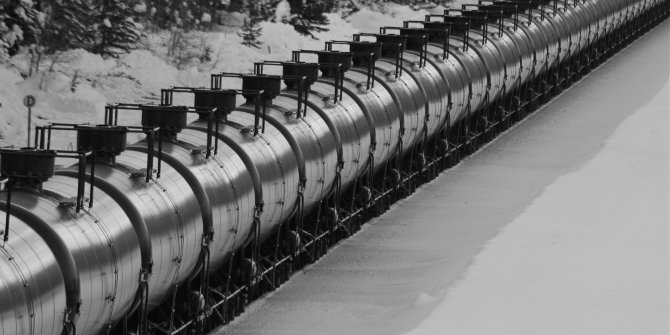 Coal has played a major role in U.S. energy production for decades, but environmental concerns have led to the rise of what some commentators have dubbed the “War on Coal”. Now, new regulations from the Environmental Protection Agency (EPA) will essentially block the construction of new coal power plants, and force existing ones to use expensive carbon capture technology, meaning that coal will continue to lose ground to natural gas in U.S. energy production. Jessica Smith Rolston writes that the coal industry’s future-oriented advocacy of carbon capture technology and opposition to the EPA’s new regulations undermines its arguments that coal-fired energy can be ‘clean’ in the future.
Coal has played a major role in U.S. energy production for decades, but environmental concerns have led to the rise of what some commentators have dubbed the “War on Coal”. Now, new regulations from the Environmental Protection Agency (EPA) will essentially block the construction of new coal power plants, and force existing ones to use expensive carbon capture technology, meaning that coal will continue to lose ground to natural gas in U.S. energy production. Jessica Smith Rolston writes that the coal industry’s future-oriented advocacy of carbon capture technology and opposition to the EPA’s new regulations undermines its arguments that coal-fired energy can be ‘clean’ in the future.
The most recent and likely most decisive battle in the “War on Coal” is the Environmental Protection Agency’s forthcoming regulation that aims to cap carbon pollution from power plants. Widely viewed as the centerpiece of President Obama’s climate change legacy, the new standards will build on draft regulations released by the agency last year. These effectively block the construction of new coal-fired power plants, since new plants would have to emit less than 1,100 pounds of carbon dioxide per megawatt hour, roughly the same rate as plants utilizing natural gas. To comply, coal-fired plants would need to engage in carbon capture and storage (CCS), technology that is expensive and yet to be commercially proven. Making the case for the continued place of coal in a country that increasingly desires its energy to be both affordable and environmentally sound, however, raises contradictions the industry itself has yet to address.
If the standards for new plants are extended to those already in operation, as industry and political insiders suspect, coal will continue to lose ground to natural gas. As Figure 1 shows, in April 2012, for the first time in recent history, coal and natural gas contributed equal shares—roughly a third each—to the U.S. electricity market. That number represented a sharp downturn for coal, which previously supplied nearly half of the country’s electricity. The downturn stemmed primarily from the ascendance of natural gas, as hydraulic fracturing and horizontal drilling techniques unlocked unconventional reserves and the industry capitalized on public pressure for cleaner domestic energy sources.
Figure 1 – U.S. monthly net electric power generation 2007 – 2013

Source: EIA
Coal has regained ground since the April 2012 low, but the proposed EPA regulations would hasten the retirement of the industry’s aging fleet of power plants. Since 2011, a quarter of coal generation units have either retired or are set to be retired, and experts estimate that economic pressure and the new pollution rules will push that percentage up to a third. The new standards are based on a handful of CCS demonstration projects, including the Kemper County CCS plant in Mississippi. Expected to come online in late 2014, the plant is designed to trap 65 percent of its CO2 emissions for reinjection into an oilfield and simultaneously convert coal into natural gas. Critics argue against using the Kemper plant as a benchmark for others due to its cost. In response, Rep. Whitfield (R-KY) and Sen. Manchin (D-WV) penned the Electricity Security and Affordability Act, recently passed by the House, which bases less stringent emissions standards on the one-year average of six of the country’s most efficient already existing coal units.

Blocking the use of new CCS plants as the industry’s emissions standard, however, puts coal advocates in an awkward position in relation to their own promotion of the technology as a strategy for bringing about an era of “clean coal.” In response to rising concerns about coal’s contribution to climate change, the industry touts CCS as an achievable technology that will one day enable Americans to continue burning cheap, domestic coal without compromising the climate. Yet in criticizing the EPA regulations’ basis in CCS technology, the industry actually re-voices and re-purposes a common criticism leveled against them by environmental organizations: commercially viable CCS technology does not yet exist. In effect, the industry finds itself in a double-bind, using future achievements of CCS technology to justify the continued feasibility of coal-fired energy in a carbon-constrained world, at the same time as it argues that current CCS technology is not yet robust enough to serve as the industry standard.
A further irony exists in the proponents’ defense of coal as a source of economic prosperity through affordable electricity and well-paying jobs. Analyzing poverty, employment, and production statistics in West Virginia suggests that as coal production and profits have risen, poverty has grown. In Combating Mountaintop Removal, Brian McNeil reports that from 1996 to 2001, Boone County led a surge in production unmatched in the state’s history at the same time as its unemployment rate doubled (from 5.6 to 10.4 percent) and the rate of students classified as low income increased 7.6 percent to reach 57 percent of the population. The state as a whole ranks at the bottom of economic indicators such as household income, education, and access to the Internet. McNeil therefore concludes that the industry’s own shift to less labor-intensive mountaintop removal mining in Appalachia cost far more jobs than did federal regulations. Indeed, the US produces twice as much coal today than it did in 1970—but with half as many people.
The industry’s shift to enormous surface mines such as Wyoming’s Powder River Basin hastened the mechanization of the industry. This region produces 40 percent of the country’s coal with less than 10 percent of the industry’s workers.
Figure 2 – U.S. coal production: top two mines vs. top five states (2012)

Source: EIA
My own research in Wyoming attests to the significant economic benefits coal can produce when the resource is managed responsibly, workers are treated well, and market conditions are favorable. In 2010 Wyoming’s median household income ranked in the top 20 in the country. That year the state’s unemployment rate hovered around five percent, with Campbell County (home to most of the mines and employees) at four percent. From 2006 to 2010, the median household income in the county was $76,576 and the home ownership rate was 75.7 percent. Comparing Wyoming and West Virginia should give observers pause when linking coal production and economic development without considering larger questions of the labor process, governance, and corporate social responsibility.
The escalating political challenges of the domestic coal market have called into question the longevity of even the Wyoming mines, where companies hope to export coal to China and others in Asia Pacific region, one of the few places in the world where coal demand is growing.
Figure 3 – Coal consumption by global region

Source: BP
Those exports would require an expansion of the Pacific Northwest port system, which is opposed by locals concerned about train traffic and coal dust and by national environmental organizations seeking to stop the exportation of greenhouse gasses. Out of six proposed port expansion projects, only three remain, with each facing intense public scrutiny and a prolonged permitting process. If the industry is successful in expanding the port system to enable the exports, observers will keenly watch to see how an industry that once portrayed mining coal as a patriotic duty—to the point of one infamous executive literally cloaking himself in the American flag—navigates the symbolic transition to a provider of energy for the Chinese.
Featured image credit: Kimon Berlin (Creative Commons BY SA)
Please read our comments policy before commenting.
Note: This article gives the views of the authors, and not the position of USApp– American Politics and Policy, nor of the London School of Economics.
Shortened URL for this post: http://bit.ly/1lh0IW7
_________________________________
About the author
 Jessica Smith Rolston – Colorado School of Mines
Jessica Smith Rolston – Colorado School of Mines
Jessica Smith Rolston is the Hennebach Assistant Professor of Energy Policy in the Division of Liberal Arts and International Studies at the Colorado School of Mines. She is the author of Mining Coal and Undermining Gender: Rhythms of Work and Family in the American West (Rutgers University Press, 2014). Her anthropological research on mining, gender, labor, and corporate social responsibility appears in the journals American Anthropologist, Signs: Journal of Women in Labor and Society, Anthropology Today, and WorkingUSA: The Journal of Labor and Society.






